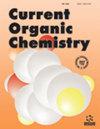A Review on Chemical Synthesis of Leaf Alcohol
IF 2.1
3区 化学
Q3 CHEMISTRY, ORGANIC
引用次数: 0
Abstract
Leaf alcohol is a flavor and fragrance compound and has been shown to possess an intense characteristic grassy-green odor of freshly cut green grass and leaves, which is widely used as an added flavor in fragrances, food flavors and tobacco flavors to provide a fresh grassy note. However, the market has been unable to meet this surge in demand, resulting in a frequent shortage of leaf alcohol. At present, there are two processes used in industrial production: the process for the hydrogenation of 3-hexyn-1-ol and the process for the ring opening reaction of 6-methyl-3,6-dihydro-2H-pyran. The reason for the shortage is that there are certain difficulties and shortcomings in the current methods of synthesizing leaf alcohol. The disadvantages of the process for the hydrogenation of 3-hexyn-1-ol are the production security and dependability, the prime cost of catalyst and equipment. The disadvantages of the process for the ring opening reaction of 6-methyl-3,6-dihydro-2H-pyran are the product quality, production dependability, and the prime cost of the equipment. To solve this contradiction between supply and demand, many research groups are investigating chemical synthetic methods that could be applied in industrial production easily and economically. Since the discovery of leaf alcohol, much has happened in the synthesis of Leaf alcohol. Many developments became market realities, so after all these years, it seemed appropriate to sum up the current trends in the synthesis of Leaf alcohol. In this review, we bring a collection of various synthetic approaches leading to Leaf alcohol.叶醇的化学合成研究进展
叶醇是一种香料和香料化合物,已被证明具有新鲜切割的绿草和叶子的独特草绿色气味,广泛用作香料、食品香料和烟草香料中的添加香料,以提供新鲜的味道。然而,市场无法满足这种激增的需求,导致叶醇经常短缺。目前,工业生产中有两种工艺:3-己炔-1-醇加氢工艺和6-甲基-3,6-二氢-2H-吡喃开环反应工艺。不足的原因是目前叶醇的合成方法存在一定的困难和不足。3-己炔-1-醇加氢工艺的缺点是生产的安全性和可靠性、催化剂和设备的主要成本。6-甲基-3,6-二氢-2H-吡喃开环反应工艺的缺点是产品质量、生产可靠性和设备的主要成本。为了解决这种供需矛盾,许多研究小组正在研究可以在工业生产中安全、经济地应用的化学合成方法。自从叶醇被发现以来,叶醇的合成过程发生了很多变化。许多发展成为了市场现实,所以经过这么多年,总结叶醇合成的当前趋势似乎是合适的。在这篇综述中,我们收集了导致叶醇的各种合成方法。
本文章由计算机程序翻译,如有差异,请以英文原文为准。
求助全文
约1分钟内获得全文
求助全文
来源期刊

Current Organic Chemistry
化学-有机化学
CiteScore
3.70
自引率
7.70%
发文量
76
审稿时长
1 months
期刊介绍:
Current Organic Chemistry aims to provide in-depth/mini reviews on the current progress in various fields related to organic chemistry including bioorganic chemistry, organo-metallic chemistry, asymmetric synthesis, heterocyclic chemistry, natural product chemistry, catalytic and green chemistry, suitable aspects of medicinal chemistry and polymer chemistry, as well as analytical methods in organic chemistry. The frontier reviews provide the current state of knowledge in these fields and are written by chosen experts who are internationally known for their eminent research contributions. The Journal also accepts high quality research papers focusing on hot topics, highlights and letters besides thematic issues in these fields. Current Organic Chemistry should prove to be of great interest to organic chemists in academia and industry, who wish to keep abreast with recent developments in key fields of organic chemistry.
 求助内容:
求助内容: 应助结果提醒方式:
应助结果提醒方式:


